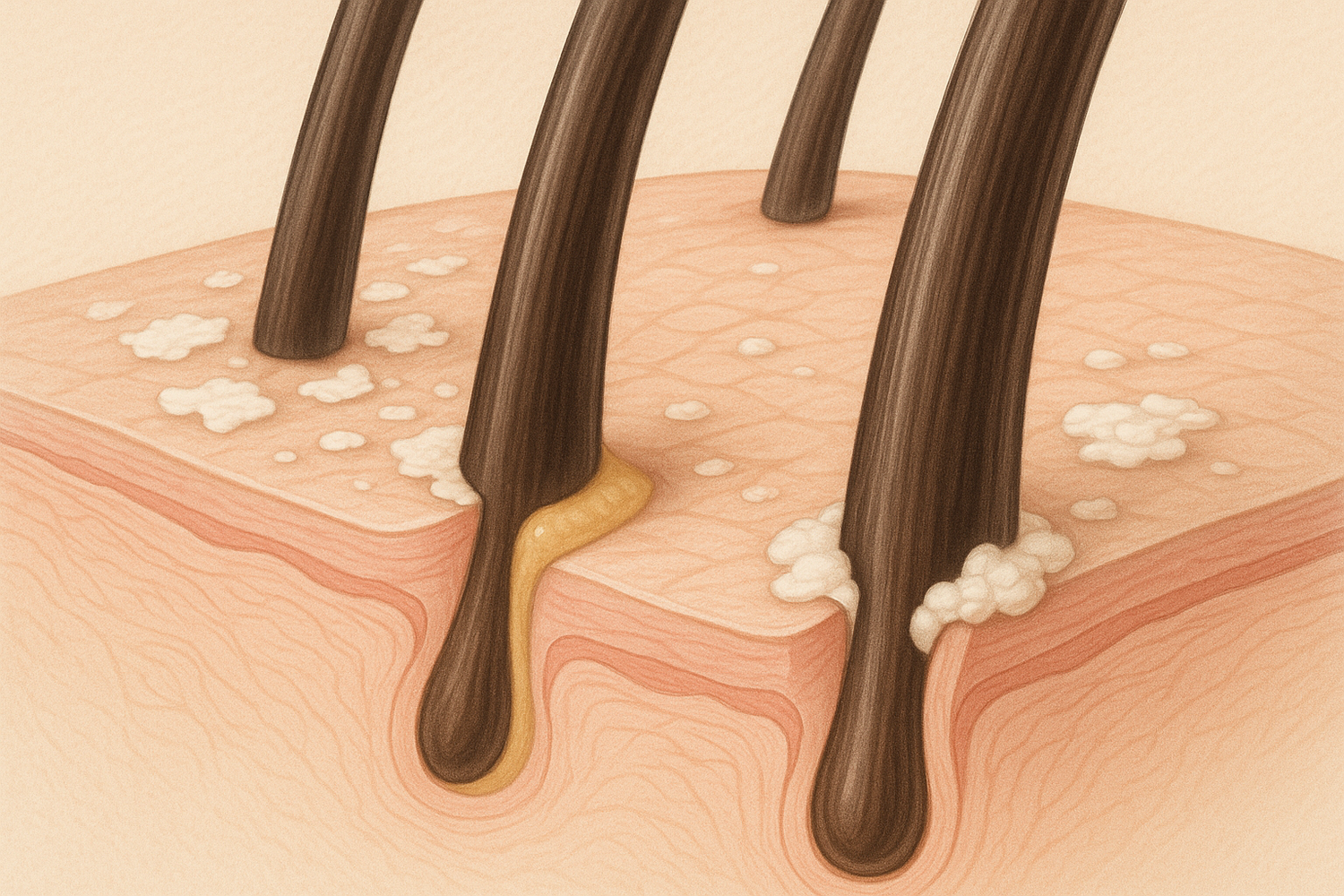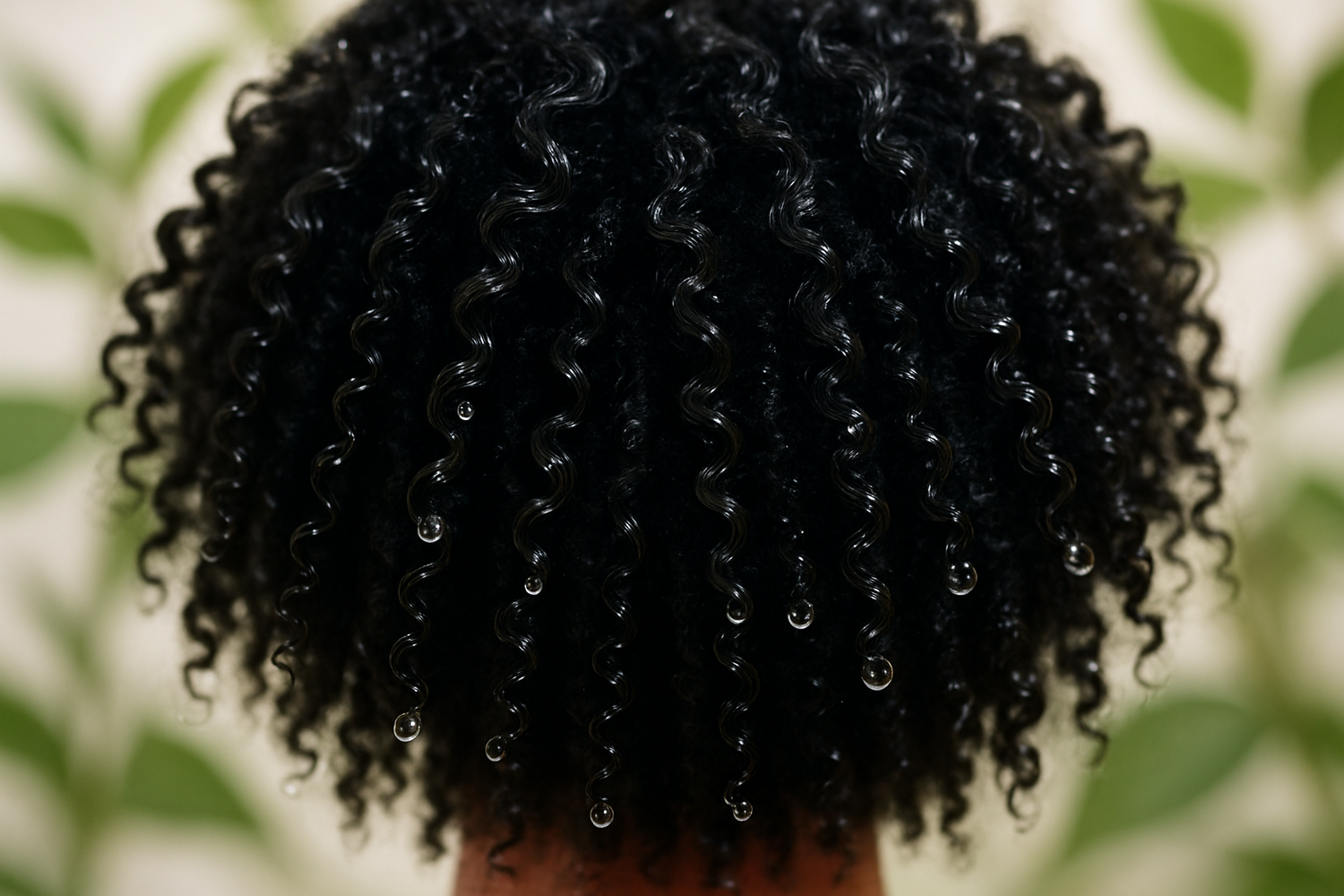Porosity is a critical factor in understanding and managing curly hair. It refers to your hair's ability to absorb and retain moisture. Understanding your hair's porosity can help you choose the right products and create a hair care routine that enhances your natural curl pattern and definition.
There are three main categories of hair porosity:
-
Low Porosity Hair:
- Characteristics: Low porosity hair has a tightly bound cuticle layer that resists moisture absorption. Water beads up on the hair's surface rather than being absorbed.
- Curl Pattern Impact: Low porosity hair can have well-defined curls and tends to be less prone to frizz due to the tight cuticle layer.
- Tips: To enhance curl definition and prevent moisture buildup, use lightweight, water-based products. Steer clear of heavy oils and butters that can weigh down the hair.
-
Normal Porosity Hair:
- Characteristics: Normal porosity hair has a balanced ability to absorb and retain moisture. It typically has a good balance between the cuticle layers being open and closed.
- Curl Pattern Impact: Normal porosity hair often exhibits a healthy curl pattern with good definition.
- Tips: Maintain this balance by using a variety of products and techniques to keep your curls hydrated without overloading them with products.
-
High Porosity Hair:
- Characteristics: High porosity hair has a raised cuticle layer, allowing it to absorb moisture quickly but struggle to retain it.
- Curl Pattern Impact: High porosity hair can have less defined curls due to the excessive moisture absorption. It's more prone to frizz and dryness.
- Tips: Focus on sealing in moisture by using heavier products like creams and butters. Deep conditioning and protein treatments can help improve hair strength and definition.
To determine your hair's porosity, you can do a simple porosity test. Take a strand of clean hair and place it in a bowl of water.
- If the hair sinks quickly, it likely has high porosity.
- If it takes some time to sink, it's probably of normal porosity.
- If it floats on the surface, it's likely low porosity.
Once you understand your hair's porosity, you can tailor your hair care routine accordingly:
-
Low Porosity Hair Care:
- Use lightweight, water-based products.
- Incorporate heat during deep conditioning to help open the cuticle.
- Avoid heavy oils and products that can create buildup.
-
Normal Porosity Hair Care:
- Maintain a balanced routine with a variety of products.
- Use protein treatments as needed to maintain strength and elasticity.
-
High Porosity Hair Care:
- Focus on moisture retention with heavy creams and butters.
- Use leave-in conditioners to seal in moisture.
- Consider regular protein treatments to strengthen the hair.
Remember that individual hair types can vary, and factors like genetics, environmental exposure, and heat styling can affect porosity. Regularly assessing your hair's needs and adjusting your routine accordingly will help you achieve the best curl pattern and definition for your unique hair.




